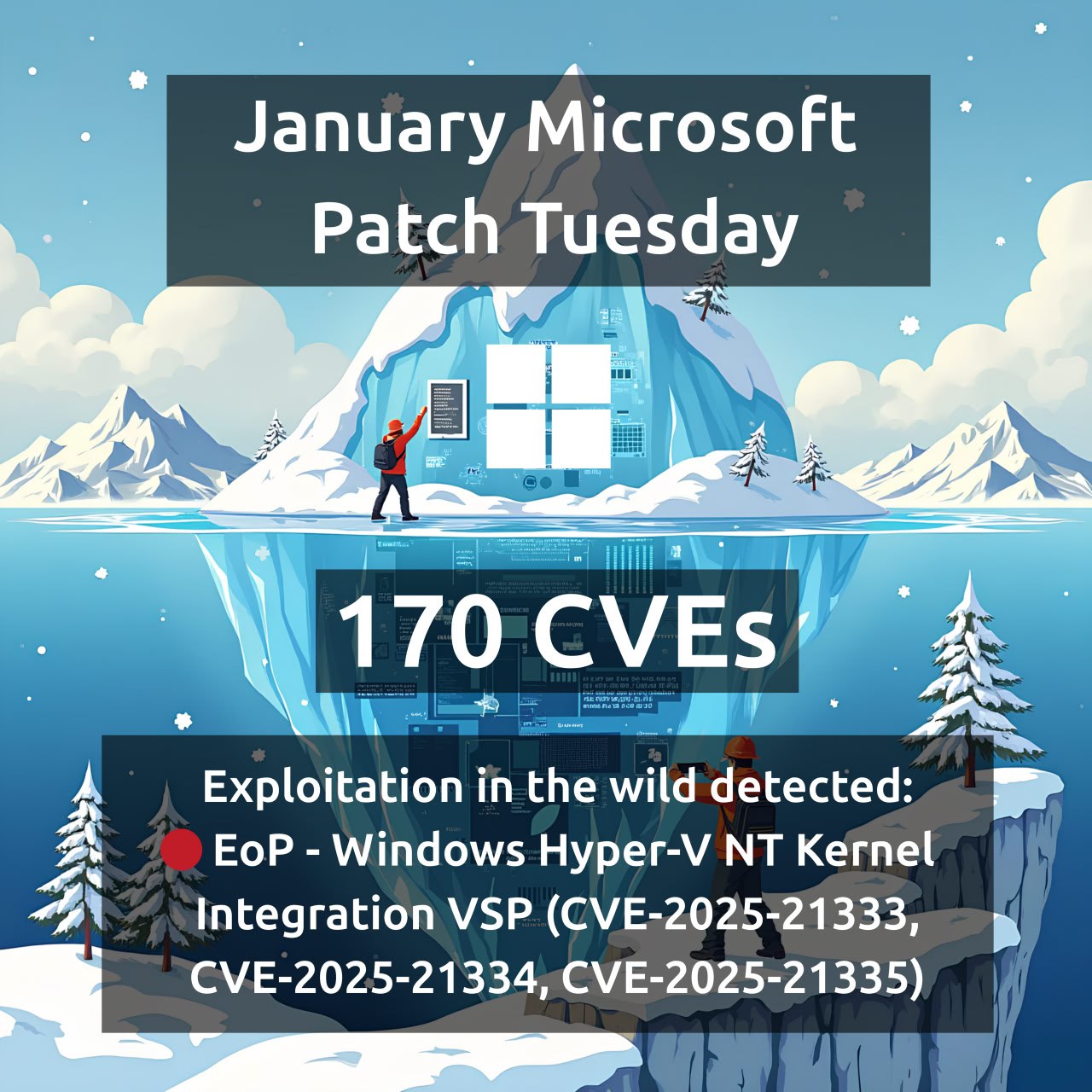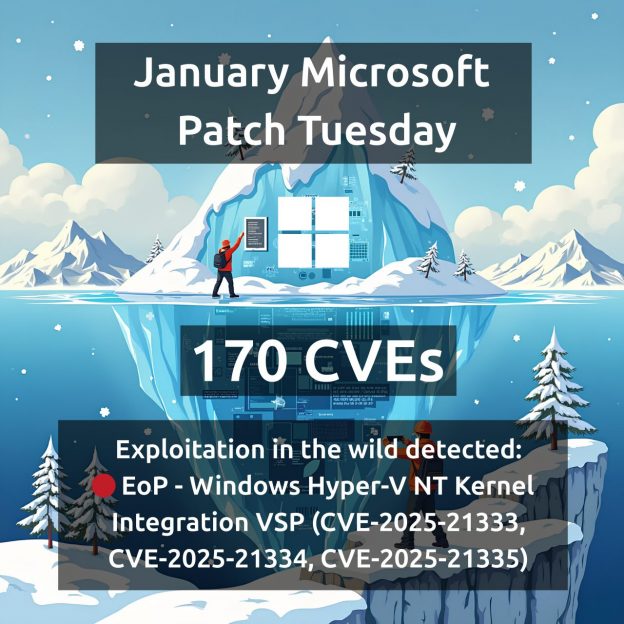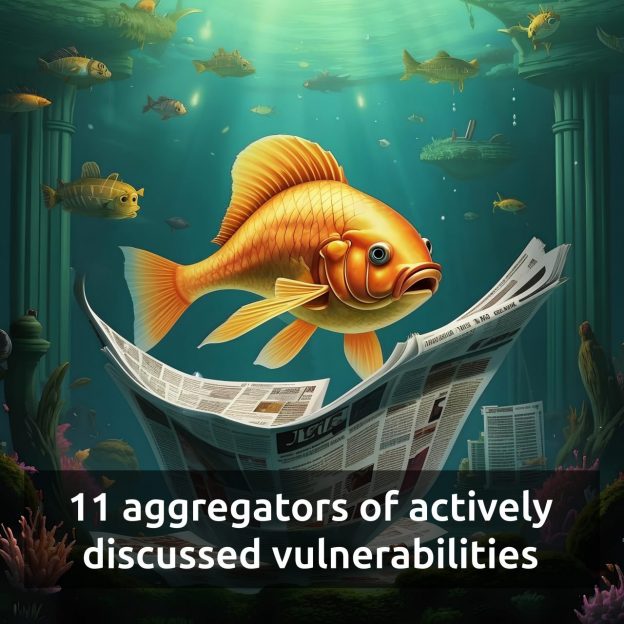
January Microsoft Patch Tuesday. 170 CVEs, 10 of them were added since December MSPT. 3 exploited in the wild:
🔻 EoP – Windows Hyper-V NT Kernel Integration VSP (CVE-2025-21333, CVE-2025-21334, CVE-2025-21335). No details yet.
No vulnerabilities have public exploits. 5 have private ones:
🔸 Security Feature Bypass – Microsoft Update Catalog (CVE-2024-49147), MapUrlToZone (CVE-2025-21268, CVE-2025-21189)
🔸 EoP – Windows Installer (CVE-2025-21287)
🔸 Auth. Bypass – Azure (CVE-2025-21380)
Notable among the rest:
🔹 RCE – Windows OLE (CVE-2025-21298), Windows RMCAST (CVE-2025-21307), Microsoft Office (CVE-2025-21365), Windows Remote Desktop Services (CVE-2025-21297, CVE-2025-21309), NEGOEX (CVE-2025-21295)
🔹 EoP – Windows NTLM V1 (CVE-2025-21311), Windows Search Service (CVE-2025-21292), Windows App Package Installer (CVE-2025-21275)
🔹 Spoofing – Windows Themes (CVE-2025-21308)











